
Narendra Nathan of ET has spoken to leading stock market experts such as Pankaj Pandey, of ICICI Direct, Kunj Bansal of Centrum Capital, Deepak Purswani and Bhupendra Tiwary of ICICI Direct, Anupam Bafna, of Nirmal Bang, Clyton Fernandes of Systematix Shares, Rahul Modi of Antique Stock Broking, Sudeep Anand of IDBI Capital Markets and Vinod Nair of Geojit BNP Paribas and collated their opinions on the best stocks to buy now.
(i) Somany Ceramics – Set to gain market share from unorganised players
Demonetisation has severely hurt the tiles industry. However, its impact on organised players, such as Somany Ceramics, the country’s second-largest ceramics company—7% market share—has been limited. In fact, Somany is likely to gain market share from the heavily cash-dependant unorganised players, which make up 50% of the market. Besides the demonetisation hit, most unorganised players used to under-report manufacturing and sales to save on taxes. This won’t be possible once the Goods and Services Tax is rolled out.
Somany has an all India network of around 1,100-1,200 dealers and a strong brand recall. It should be able to gain a significant market share from the unorganised players. The tiles sector will also benefit from schemes such as Swachh Bharat and Housing for All. To keep up with the demand, Somany will treble its annual capacity by June 2017. Improvement in margins, triggered by the fall in natural gas prices, a key raw material, should continue in the coming quarters as well.
(2) Minda Industries – Growing customer base and joint ventures to fuel growth
For the last few years, this auto parts company has outperformed the industry average in all major divisions it operates in—switches, lighting and horns. The auto industry has taken a short-term hit due to demonetisation and it will reflect in the auto components business as well (comprising around 82% of Minda’s revenue). Since the two-wheeler segment, which accounted for 56% of Minda’s revenue in 2015-16, has been hit the hardest, the company too will bear the pain.
Despite this, Minda’s revenue is expected to grow by 25% between 2015-16 and 2017-18. A growing customer base, upcoming joint ventures and product innovation will primarily fuel this growth. To boost organic growth, Minda is going for group consolidation. This will help cut operating leverage (costs) and improve EBITDA margins by 2017-18. Minda is also pursuing inorganic growth. It has entered the alloy wheel segment through a joint venture to supply to Maruti and M&M. The company is also planning to enter the auto batteries space for four-wheelers.
Aiming to grow exports at an annualised 25% for the coming years, Minda is planning to strengthen its overseas presence through strategic tie-ups and acquisitions. Its acquisition of Spain’s Clarton Horns, for instance, will give Minda access to leading players like BMW and Kawasaki.
Margins should improve to 10.4% by 2017-18 due to consolidation of businesses, better capacity utilisation and inorganic growth.
(3) Repco Home Finance – Fall in stock price a boon for long-term investors
This fast-growing company’s share price has fallen sharply since the demonetisation move was announced. This is because 60% of its loan book comprises the self-employed class. Loans against property make up 20%. So, its non-performing assets (NPA) may rise in the short-term— next 1-2 quarters. However, because of Repco’s low loan-to-value ratios—average is now below 60%—the impact of the fall in property prices will not be big.
Also, since most of its business is not cash based, there won’t be any operational hurdles as such. Experts say that the aggressive housing loan pricing by large banks will not affect the business of smaller players such as Repco, as it is focused on small towns and targets salaried people—large banks are not aggressive on this segment.
The recent correction in this counter is a good buying opportunity for long-term investors. Demand for low-cost housing has been consistent and Repco’s focus on small housing loans will get a major boost on account of interest rate subvention for lowcost housing. With a net NPA of 0.5%, Repco also boasts of high asset quality. Once the company’ credentials are established, it will get a higher rating which will bring down its funding costs.
Repco is very conservative and lends only at low loan to value ratio. Since the borrower’s contribution is high, the chance of default is less.
(4) Ahluwalia Contracts – High-margin projects to offset reduced order inflow
Ahluwalia Contracts is an engineering, procurement and construction contractor. It concentrates on civil works and has been reporting good numbers for the last few quarters. The counter is increasingly becoming analysts’ favourite because its EBITDA (earnings before interest, tax, depreciation and amortisation) margin has been consistently rising because of better execution and reduction in low-margin legacy orders.
The company also has a large order book, around three times its 2015-16 revenue and has also taken steps to sustain the high order intake.
To compensate for the weak order activity from the private sector, Ahluwalia Contracts has shifted focus to high-margin public orders, which currently contribute around 60% of its order book.
Ahluwalia Contracts has an asset light and low-debt model. Its increased focus on order execution has further reduced its working capital cycle—time needed to convert assets and liabilities into cash. This has reduced borrowing cost and cut debt.
Expected further debt reduction and better working capital management will help the company improve its debtequity ratio to 0.1 by 2017-18 from 0.3 in 2015-16.
(5) Inox Leisure – Ad revenue has seen double-digit growth
Inox Leisure is the second-largest multiplex player in India, with a 19% share of multiplex screens. Inox accounts for around 8% of all box office collections. Though the September quarter was a bit disappointing, analysts remain bullish on this counter.
The multiplex segment is passing through a boom phase which is likely to continue for decades. Though there are much greater number of single screen theatres, around 8,000-10,000, most of them are on the verge of shutting shop. Most of them have closed down in the metros and are being replaced by multiplexes in tier-2 and tier-3 cities as well. The ticket rates are also significantly higher in multiplexes and, due to this, the share of multiplexes in overall collection, despite their smaller number—around 2,000—is much larger.
Inox is now trading at a huge discount—20-25%—compared to the market leader PVR. However, its advertising revenue has seen a double digit growth in the past three quarters.
Inox’s ad revenue per screen are at a discount to that of PVR and, thus, there’s a huge scope of improvement.
(6) PTC India – Steady cash flows reduce investors’ risks
PTC India is the country’s leading power trading company with a market share of 30% in the trading business. Though it operates on a very small margin of 4-6 paise per unit, steady and known cash flows reduce the risks for investors. The company has signed long-term power purchase agreement (PPA) with power generators and is expected to do the same with power consumers as well. Due to the increased power generation capacity and PTC’s long-term power purchase agreements, it is expected to report more than 16% annualised growth in volumes between 2015-16 and 2017-18.
The company has also diversified: PTC India Financial Services is already a listed company and PTC Energy, an alternative energy generation firm, is expected to commission 250 MW of wind power by 2017-18— 50 MW was commissioned in 2015-16. Since the PPAs are already in place, PTC Energy is expected to generate decent internal rate of returns of 14%- 16%.
Since PTC has several subsidiaries, and the slowdown in the power sector, the counter is now trading at a discount. This market leader, with a stable cash flow, is now trading at a PE of 9.44, giving a good entry opportunity to long-term investors.
PTC has done well with a double digit volume growth even during difficult times. It may show volume growth of 10-12% in the next 4-5 years.
(7) Capital First – Loan book and net profit to see a huge growth
This non-banking financial company is engaged in mortgage financing for micro, medium and small enterprises (MSME), consumer durable loans and wholesale credit.
Though the counter is not quoting cheap (PE of 33), valuations are justified because of high earnings growth.
Even after the downgrade in estimates due to demonetisation, the NBFC’s loan book and net profit is expected see an annualised growth of 30 and 38% respectively between 2015-16 and 2017-18. Since Capital First focuses on MSMEs and consumer durable loans, it enjoys a high net interest margin (NIM).
The expected fall in the interest rate structure will reduce its cost of capital and may result in higher NIM. Capital First was also able to maintain its gross NPA and net NPA levels at 0.98 and 0.45% respectively (as on September 2016) and since cash transaction mix in its loans portfolio is low, there may not be big risk to asset quality on account of demonitisation.
Its consumer durable finance segment is doing well and Capital First plans to get into home loan in tier-2 and tier-3 cities. A very high capital adequacy ratio (CAR) is another positive aspect for this counter.
With its CAR estimated to be at 22% by March 2017, there is no limit in its growth prospects.
(8) Finolex Industries – Capacity addition will help meet rising demand
Finolex Industries, India’s largest rigid PVC pipes and fittings manufacturer, has taken the demonetisation turmoil in its stride. Though the company’s sales fell sharply fall in November, there was a significant improvement in sales in December.
Analysts are hopeful that things will be back to normal by end- of January and are getting increasingly bullish on this counter. This is because the domestic consumption story is still intact.
Also, strong companies, such as Finolex Industries, are taking steps to benefit from the expected rise in domestic consumption.
The domestic consumption story remains intact and since Finolex Industries is targeting to increase capacity by 30,000 metric tonne every year, it should be able to capture this expected demand growth in the next 2-3 years.
Finolex is also concentrating on new product development to gain from the rising demand for new products on account of increasing urbanisation.
More importantly, the capacity addition cost of around Rs 25-35 crore per annum will be met through the company’s internal accruals and the remaining cash flow will be used to bring down its debt. Since the company’s total debt is expected to come down from Rs 112 crore in 2015-16 to Rs 42 crore in 2017-18, its total interest costs should also come down significantly.
This, along with the improved operating margin—due to lower power costs— should result in better margins in the coming years for Finolex.

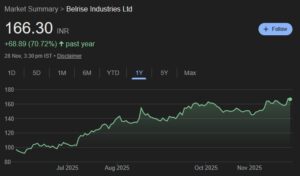

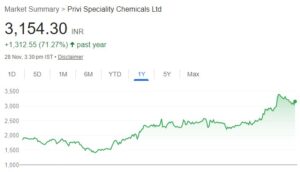
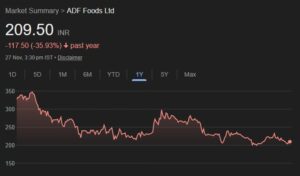
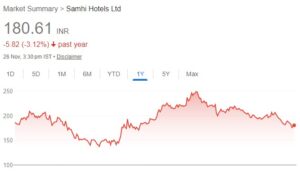
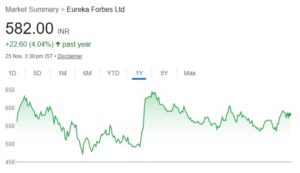
Porinju bought BDH Industries.
That was in March 2015
please write an article on Looyd Electric. Dolly Khanna has been continuously increasing her holdings in it now has more than 1% holding.
please write an article on Lloyd Electric. Dolly Khanna has been continuously increasing her holdings in it now has more than 1% holding.
FINOLEX INDUSTRIES LOOKS ATTRACTIVE SINCE THE DOMESTIC CONSUMPTION STORY IS INTACT AND THEY ARE COMING OUT WITH NEW PRODUCTS TO MEET THE RISING DEMAND OF URBANIZATION. OF COURSE, IT IS A LONG TERM INVESTMENT IDEA.
Honestly I think only PTC is worth notice and to build conviction on its performance we need to waiting time of 1 or 2 months
Is it worth to pick all together these 8 picks in current scenario when large caps are available at cheaper value.